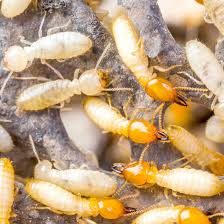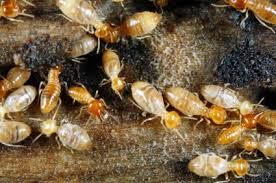Examine This Report about Termite Control Using Borax
Once a termite inspection has been carried out, pest control specialists can recommend a best plan of action to eliminate existing termites and prevent future infestation. Usually, some form of chemical treatment will be recommended. Termites treatments include temporary compound applications, baits, traps in addition to structural and physical barriers.
In many cases, this will be all it takes to eliminate an entire colony of termites. You may be in risk of infestation, if you start with termite baiting. Termites can have a community of tunnels that they travel through to reach a fundamental nest around 100 metres from their food sources.
Ultimately the extent of your problem and the control procedure necessary to resolve the price that you pay will be impacted by it.
Excitement About Termite Control Use
Treatment with polyurethane, dust or a spray can cost between $3 30 and $6 60 depending on the extent of the harm.
Soil therapy is the method to keep termites away from your house. This can cost between $2 500 and $3 500, but will not have to be repeated.
Expect to pay in the region of $2 50 for a pest inspection, and $300-$600 for a joint building and pest inspection.
About Termite Control Use
Before you rent a local pest control expert, make sure you check what they include as part of their service.
Be as comprehensive as possible in describing the type or kinds of pests you've got and the level of the issue. Mention these, if there are access difficulties. This way you will get more accurate quotes. In case youre hiring a termite control service guarantee their treatment plan is compliant with Australian Standard AS 36 60.
Reputable services will supply a money-back guarantee. Also check that your pest control service is qualified and licensed to operate in your property. .

Excitement About Termite Control Using Borax
Termites consume cellulose and timber in bush land and serve a significant ecologicalfunction by turning dead trees to organic matter. Unfortunately to termites, thewood in buildings and other structures such as bridges and electricity poles is equallyappealing from the urban surroundings and infestation may cause damage.

Direction of termites, and eradication of exotic species isalso costly a campaign to eradicate West Indian dry wood termite Cryptotermes brevis (Walker)in Queensland is estimated to have cost $4.2 million by 199 8 (Peters and Fitzgerald, 199 8).Worldwide, harm caused by termites is projected at U.S $2 billion per annum in terms of Urban cities & termite attack Environment 2 3Â damage to wooden structures (Fage et al., 198 8). .
Prevention and treatment of termite damage in Australian cities is therefore needed, and may give rise to unwanted side effects. Until 199 5 termiticide treatments were utilized to create barriers. These have been replaced with other, less persistent, compounds and physicalbarriers. As more information a result, chemical termiticides need to be reapplied on a regular basis, averagingevery 3 to 5 years depending on local requirements.
Some Known Details About Termite Control Use
In 200 5, bifenthrin (FMC Australasia Pty Ltd) is the most widely used termiticide in Australia followed by imidacloprid and fipronil. Chlorpyrifos (Dow Agricultural Products) has diminished in use because of concerns over efficacy and toxicity from alkaline soils. Permethrin, alpha-cypermethrin are not now used even though they remain registered for use in Australia by the National Registration Authority (NRA). .
Australias termite fauna is diverse, represented by five families (Mastotermitidae, Termopsidae,Kalotermitidae, Rhinotermitidae and Termitidae) containing 40 known genera and more than 26 6described species. Termites play a key role in the nutrient cycles of tropical ecosystems (Whitford,199 1). Termites might be grouped as dry wood damp wood or subterranean, depending on theirhabits.
